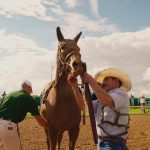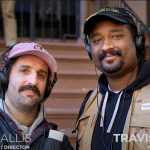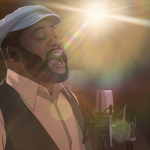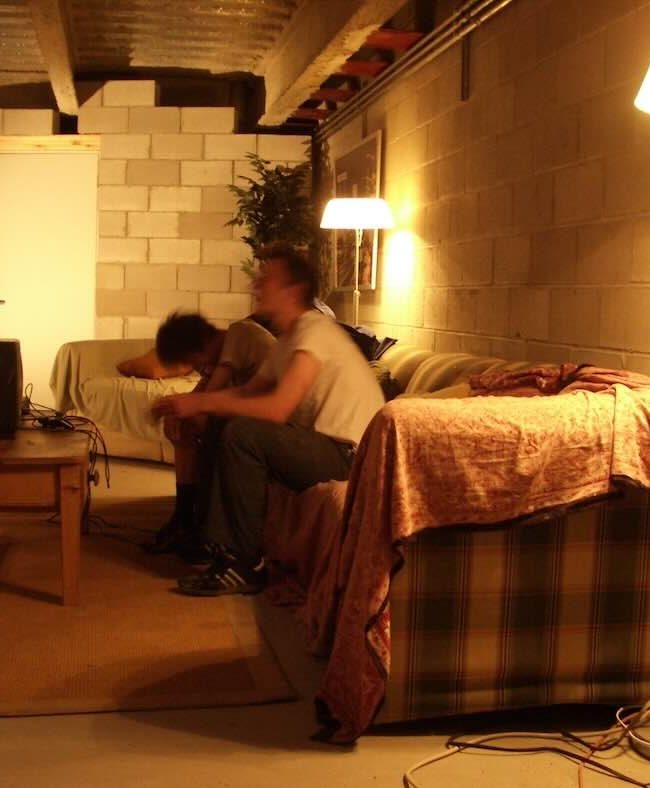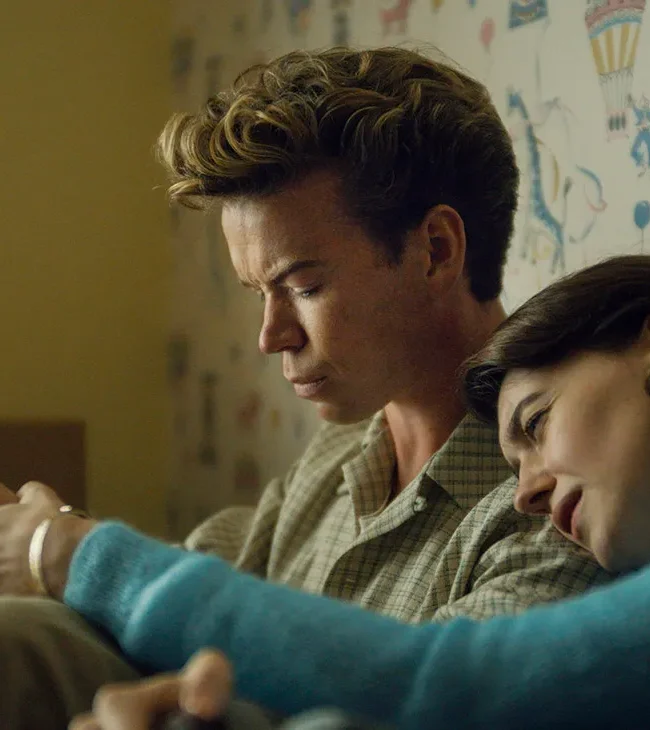A Conversation with Bernardo Britto (OMNI LOOP)
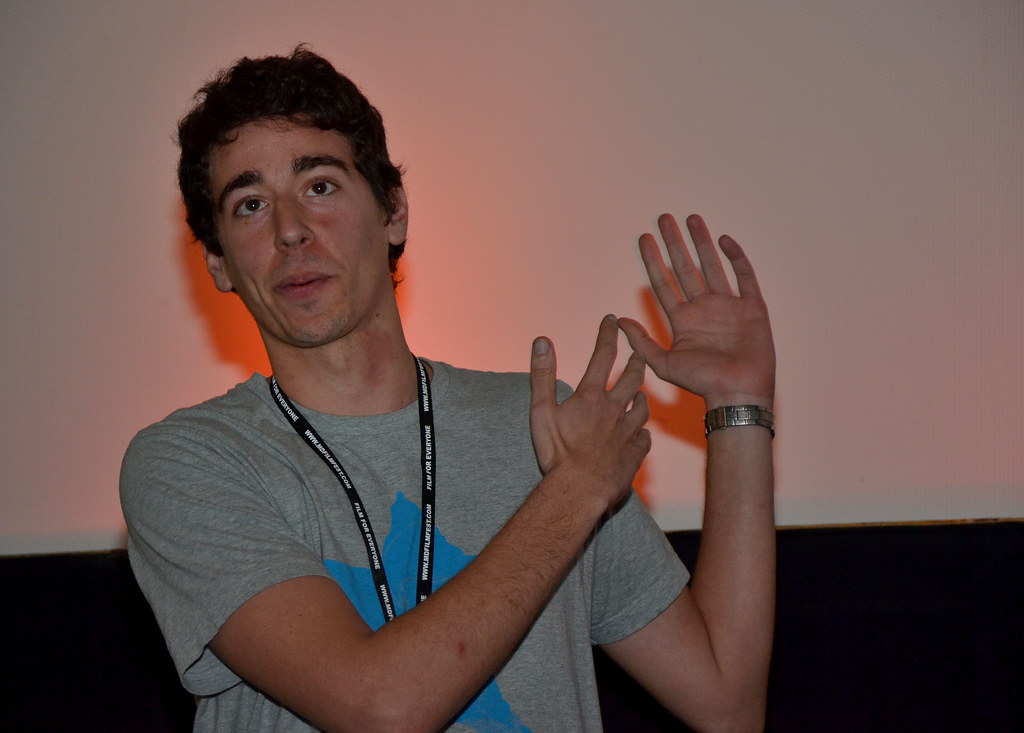
Brazilian-American filmmaker Bernardo Britto, known for his innovative animated shorts, makes his feature directorial debut with Omni Loop. This sci-fi comedy, starring Ayo Edebiri and Mary-Louise Parker, made its world premiere at the 2024 SXSW Film Festival. Britto, whose previous work includes award-winning shorts that blend existential themes with offbeat humor, brings his unique storytelling style to this ambitious full-length project. With Omni Loop, Britto expands his creative vision, tackling complex ideas through the lens of an intriguing time-loop narrative. The film touches the full spectrum of emotion and is available to rent at home right now. It was great to speak with him in the following conversation edited for length and clarity.
Hammer To Nail: The first thing I would love to hear about is the casting process. How did Ayo and Mary wind up in the roles?
Bernarndo Britto: It’s as simple as I was a huge fan of theirs. Mary Louise was brought up by a friend of mine who had seen Proof on broadway. My friend said to me, “She has a fire behind her eyes that makes her feel so alive.” That is absolutely true. I have seen her on stage a couple of times and it’s always impressive. I do not know how she does it. I sent her the script, we got on the phone and then wound up speaking for an hour! We really got along both as people and creatives. I was always a fan of hers from comedies to podcasts. There is this podcast called Hollywood Handbooks she is so funny on. When the first season of The Bear came out we reached out to Ayo. We got on the phone and started geeking out about movies. I was running through her letterboxd and making fun of her reviews. It was great working with them.
HTN: The film is a time loop movie which is bound to draw comparisons to other time loop films such as Groundhog Day. Did you watch other time loop movies in preparation? How did you find your unique spin on the time loop film?
BB: I love watching time travel movies. Time loop is an even more specific version. I have not seen Groundhog Day since I was very young. I do love that movie though and think its perfect. I did read some of the script while I was writing it but for the most part I tried to stay away from it a little bit. Edge of Tomorrow was one I consciously went back to while I was writing. That movie just rules. I was studying certain sections to see how they did it. I thought to myself before writing the project, “Is it really worth doing this silly trope again?” I started writing this in 2016. The two things I felt made it worth exploring was that this is a conscious choice she makes every time. She wants to stay in this loop as long as possible and in fact go even further back. She does not want to progress in her life. It is an avoidance of life. Usually these are mostly about getting back to what life used to be like. This lent itself to more emotionality. I also love the idea of starting already in the loop. Doing away with all of that exposition sidestepping that so the movie can focus on other things.
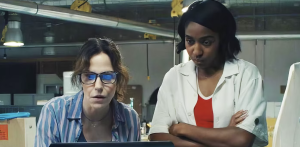
Mary-Louise Parker and Ayo Edebiri in OMNI LOOP
HTN: The film feels geared towards the theatrical experience. When making the film, was that something you strongly considered? If you could also talk about what it was like to debut it at SXSW?
BB: Debuting it at SXSW was crazy because they were the first festival that debuted any of my shorts. Claudette (Godfrey) who programmed my short in 2013 now does all the programming. She put us in this year and did the Q & A with us. Just a crazy experience. Watching it at SXSW I was curled up into a ball. I struggled to enjoy that screening haha. I love movies and movie theaters. If I miss something in theaters I often do not catch up with it. I’m very dumb about not seeing stuff in theaters. When I think about seeing a movie, I think about seeing it in a theater. I remember telling my DP this should feel Spielbergy / fairytale-ish. I wanted to make something romantic and cheesy. Something that really felt like a movie. I always imagined sitting in a theater and Ayo’s character says, “Let’s go solve time travel.” A train goes by and the audience is hopefully thinking, “Hell yeah, let’s do this.”
HTN: Unfortunately I had to watch it on my computer!
BB: One thing that is crazy about seeing it in a theater with other people is you feel the emotion towards the end. It comes through much harder when you are with other people versus alone. I edited the movie for a year, and the first time we screened it with other people in the room I started crying after months of being bored by the footage.
HTN: You could feel it was meant for a theater. You and Ava Benjamin Shore did a great job creating a world that feels slightly different from ours while ultimately being grounded in reality. What were you two hoping to achieve with the overall look of the film?
BB: For me, part of it was trying to capture Miami in a way that did not include Miami Beach. I wanted it to be like my impression of Miami, which is concrete buildings against bright blue skies. The harshness of the city mixed with that tropical environment. The movie works in a couple different movements. The first is very locked off, zoya has a lot of personal moments. We almost feel like we are being shuttled through things. By the end you get to this point where you can really feel all the characters in the room and it’s less of this quick paced, in your face, super stylish, kind of stuff. It is more about real people talking. That visual arc was very fun to explore with Ava. We both trusted each other a lot.
HTN: Early on we get this moment where Zoya (Parker) explains to the old woman her situation. This is the classic explanation of the time loop scene but, I thought you did it in a unique and fun way, can you talk about your thinking behind this early moment?
BB: In the script it was longer than it was in the movie. I realized on set that we need to explain things less. The audience understands. It was a dilemma. I wanted to do a time loop movie, but also subvert it so it does not feel like a traditional time loop movie. What starts as just a fun time loop movie winds up being about death and appreciating others. There are not many crazy things happening. There are a lot of people just sitting down and talking. I still wanted to do a lot of the fun time loop things. This was a good one where I got to go a little crazy. The most important thing was I did not want it to feel repetitive at all. I did not want the audience to go, “Ugh, we are back at this bench.” I wanted it so that by the time we got back to the bench Zoya is already thinking, “I got to get off this fucking bench.” Having her explain all of that combined with the woman’s obliviousness, I think it allows the audience to understand how much this sucks for Zoya quickly in a way that is not repetitive. Hopefully it is propulsive and fun. The Brazilian song I thought was a funny addition as well haha.
HTN: Early on we get a little disagreement between Zoya and Donald (Carlos Jacott) where she discusses returning to the lab. This is an important moment that shows not only how discontent she is with this current situation of the time loop but also her past life. What was your thinking behind this moment which then leads to the “surprise” birthday cake.
BB: That was a great scene. The actors worked on that scene a lot. They really wanted to nail what their relationship is like and what this world is like. I wanted a scene where she got to be real. When we start, she is stuck in this performative way where it does not matter what she says or does. I wanted a scene where she breaks through and tries to be real with Donald. Something I did early on when making the script was a monologue from Donalds perspective. In that monologue I got to sort out some of his frustrations. He is a nice guy but he is also exhausted trying to be there for her. When Zoya is expressing these frustrations he cannot help but feel wounded. It is a perfect scene where neither of them are being bad people, they are showing each other love, however, it is one of those times where showing love is just causing more frustrations. It was a balancing act.
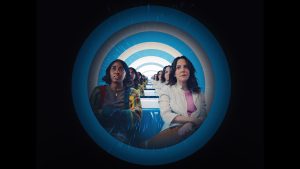
HTN: I love the scene where with a huge smile Zoya tells Ayo that she is going to find her when she wakes up. The score from Kaitlyn Smith really shines here. Talk about working with her and what you wanted to achieve at this moment?
BB: Kaitlyn is incredible. I was listening to a lot of her music as I wrote the script. I met with her in LA before she even read the script. She liked how I talked about the story. She is a very centered and zen person. She has a strong digital component to her music but she also uses a lot of organic sounds. I thought this worked the themes of the movie with personal versus professional life. The first time I heard this piano theme I thought it was so great. I showed her the first 10 minutes of the movie plus the script and she immediately sent me a treasure chest of music that I could use. When I heard this Piano theme it was just so perfect. It’s a restrained type of emotion, it is repetitive which works with the language of the movie. It is just sentimental enough that it’s not overly self serious. My favorite cue in the movie was the last one I placed. The hall of mirrors shot where we see all the different versions of her family. The flowiness and repetition of the music in this moment is so good, it feels like the theme song to thinking. It’s repetitive but there’s something different every time. I don’t understand music at all haha.
HTN: The moment we are introduced to her old college professor speaks to what makes this film so successful. What first starts off as a silly moment becomes something much more heartfelt by the end. What was your thinking behind this moment and character? What were your instructions to Harris (Yulin)?
BB: Harris came in and killed it. He showed up on set and said. “I do not want to cut my hair.” I let him run with it. His whole look in the movie I loved. I did not hear the voice he was going to do until I called action. When I heard it I was like, “Ok! I guess that is the voice we are going with.” The hardest part about that scene was working with the wheelchair. It was so loud and trying to get it to hit a mark was so much harder than you would think. I was obsessed with Mad Max Fury Road when It came out. It is one of the best movies of the past 20 years. I really loved how it was this continuous action sequence that kept unfolding. I wanted to make something that flowed and went into each other. I always knew I wanted to end in this moment where all the fun and adventure comes crashing down and we have a reality check. I remember after one great take I asked for one more and Mary was like, “You are going to have him do another one after that?!” I felt like a bad director but I had to do it!
– Jack Schenker (@YUNGOCUPOTIS)

